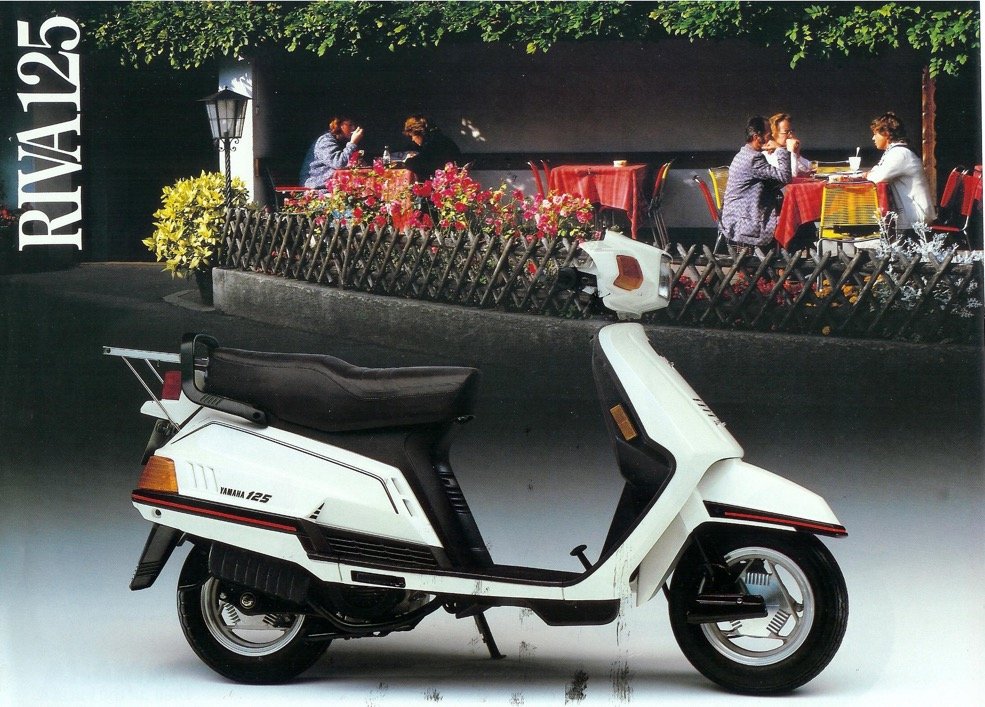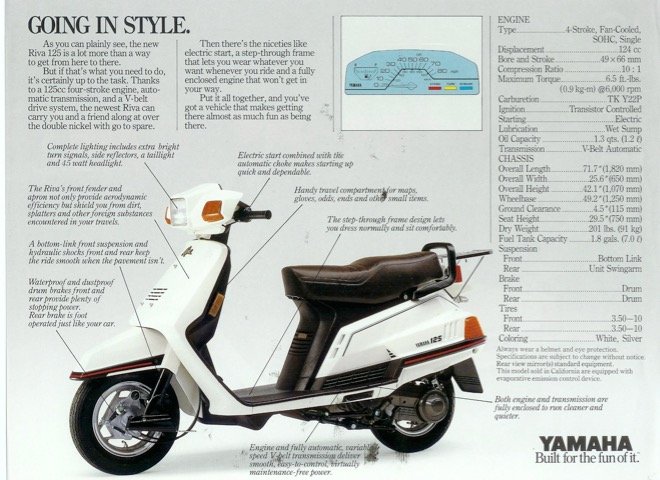YAMAHA RIVA 125 (XC125)
The Riva 125 (model code XC125) was first introduced for 1985 and was sold continuously until 2001. It took a few years off after 2001 but Yamaha released a final batch for the 2006 model year. Starting in 1986, Yamaha added a ‘Z’ version of the Riva 125 which appears to simply have fancy black paint with gold striping.
Overseas, Yamaha sold a scooter called the Beluga 125 which appears to share the same chassis and body panels, but it used a 2-stroke engine. You can explore this avenue if you’re interested in the history of this scooter or simply desperate for body parts.
 Motor
Motor
Powering the Riva 125 is a 4-stroke engine of 125cc displacement. This motor is an air cooled design putting out a healthy 11.4 horsepower at 8000 RPM. Torque is 8 ft /lbs at 6500 RPM. This motor seems to have been unique to the Riva 125, as no other Yamaha’s sold appear to use the same parts beyond a few simple nuts and bolts.
The Riva 125 can reach about 55mph and usually averages around 80mpg, which means you can cover about 120miles or 200kms on a tank (1.3 gal. / 7 litres) before it’s time to stop for gas. This is great mileage for a 125cc scooter.
Design and Amenities
The styling of this scooter has held up nicely over the years. Despite harking from the mid 80’s, the Riva 125 style held up well through the 90’s and continues to be a sharp looking scooter.
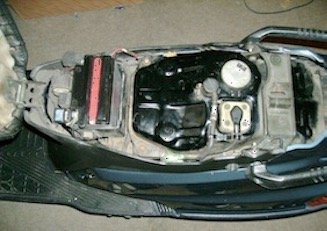
As you can see, Yamaha filled up the underseat area with the gas tank and battery. This is similar to Honda’s usage of the underseat space in their Elite 150 scooter, but the Honda does have a front ‘trunk’ which allows for more storage than just a glovebox can offer. If you are going to use a Riva 125 for longer trips, consider picking up a case that you can mount to the rear rack.
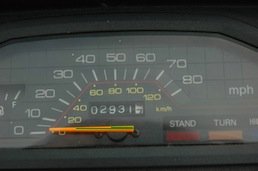
With the Riva 125, Yamaha took a shortcut to save a few pennies and omitted a fuel filter. This was a bad call by Yamaha, but they’re not the only brand that’s done this. Fixing this omission is easy and only costs a few dollars. Ask for a universal fuel filter at your local motorcycle dealership and then snip the fuel line and slip the fuel filter into place. It’s highly recommend you do this if you’re pulling a Riva 125 out of storage because you’re only one spec of gunk or gas tank rust away from being stranded on the side of the road.

Discussion
Overall, the Riva 125 is a sharp looking scooter with a few shortcomings. Specifically, the lack of storage under the seat and the 55 mph top speed mean that this scooter isn’t for people who need to travel on highways or carry a lot of stuff. You can work around the lack of storage but there’s not much you can do about the 55mph top speed. 55mph is frustratingly close to highway speeds, but it’s not something you want to have to deal with daily so it’s better to think of the Riva 125 as a very peppy scooter for around town.
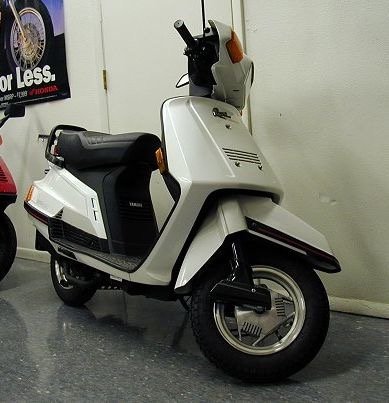
Yamaha’s larger Riva 180/200 is another option as it has a nice top speed around 75-80mph. Unfortunately, there’s still no storage beyond a glovebox and the styling isn’t as attractive. Honda’s late 80’s Elite 250 is also worth considering if you’re looking for a highway capable scooter.
For more info on the Riva 125, check out the RivaRiders group on Yahoo. You need to sign up for Yahoo to access this group, but they have complied an impressive collection of information that makes the sign up worthwhile. There’s also a photos section and a message area where you can talk to other owners.
Pros:
- Stylish
- Lots of OEM parts available
- Official Yamaha accessories
- Lots of them out there
Cons:
- Slower than the Elite 150
- Minimal storage (only a glovebox)
Links:
XC125 Service Manual – Very helpful for anyone who works on their own scooter
MotorscooterGuide Forums – Visit the forum on this site to chat about this scoot.
RivaRiders – Yahoo group of Riva 125, Riva 180 and Riva 200 owners.
JacksScooterShop – Great Info on the Riva 125 and all Japanese scooters.
Key Specs:
- Engine: Air cooled, 2 valve, 124cc, single cylinder, 4 stroke, single overhead cam
- Horsepower: 11.4 HP @ 8000 RPM
- Torque: 7.97 lbs-ft @ 6500 RPM
- Bore & Stroke: 49mm x 66mm
- Compression: 10.0:1
- Fuel System: 22mm Teikei Carb
- Spark plug: NGK C6HSA
- Spark plug gap: (0.6 – 0.7 mm)
- Lubrication: Wet sump, 1.0 litres
- Final drive: 0.15 litres
- Air filter: Wet type foam element
- Chassis Type: Steel tube underbone, 27 deg. Caster angle
- Length overall: 74 “
- Width overall: 25.6 “
- Height overall: 43.1 “
- Seat height: 29.9 “
- Wheelbase: 49.2 “
- Ground clearance: 4.3 “
- Weight (Dry/Wet): 209 lbs / 225 lbs
- Carrying Capacity: 370 lbs (passengers and cargo)
- Fuel tank: 1.8 gallons, 7.0 litres
- Light bulbs: Headlight: 40w/45w, Brake: 8w/27w, Signal: 27w
- Front suspension: Bottom-link fork, 3.3 ” travel (85 mm)
- Rear Suspension: Unit swing, 2.8 ” travel, (70 mm)
- Shocks: Front: coil spring, oil damper, Rear: gas, coil spring, oil damper
- Brakes: 130mm drum (front and rear)
- Rims: MT3.50 x 10 cast aluminum
- Tires: Tubeless, Front: 3.5-10 4PR Rear: 3.50-10 REINF
- Colors: White, Red, Silver
- MSRP: $1299 (1984 USA)

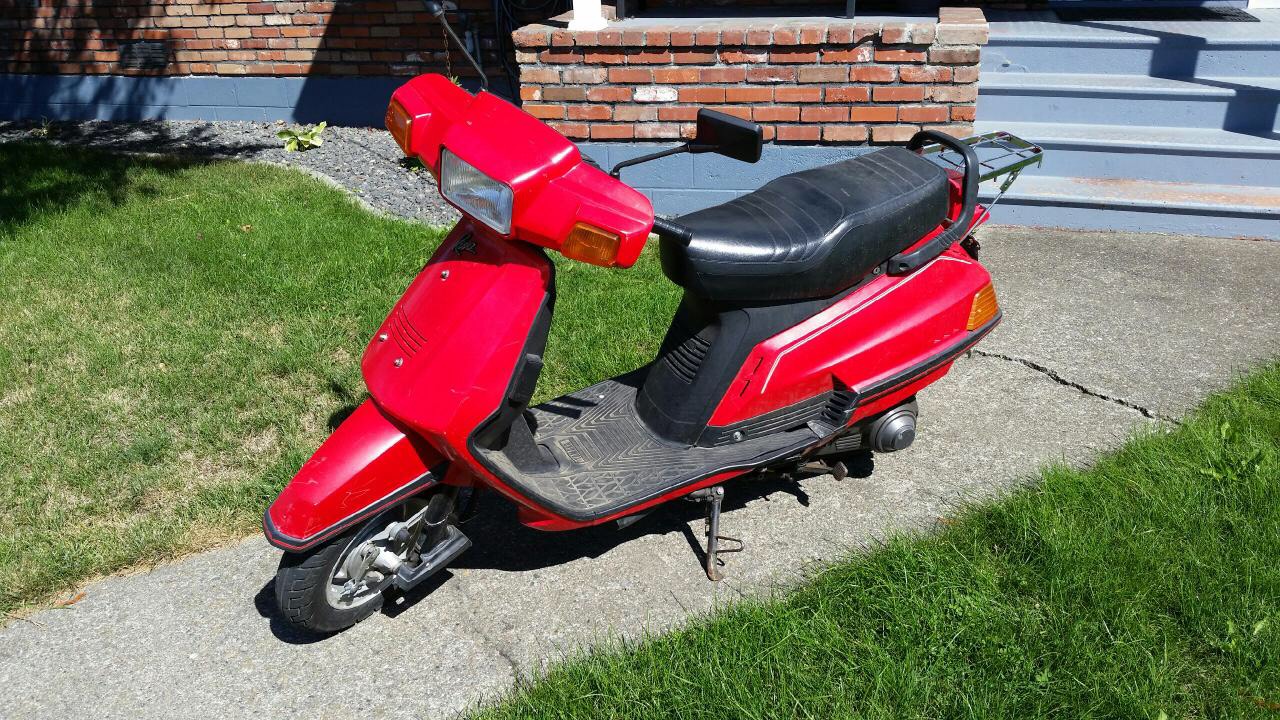

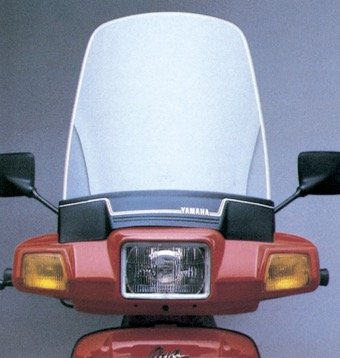 Motor
Motor